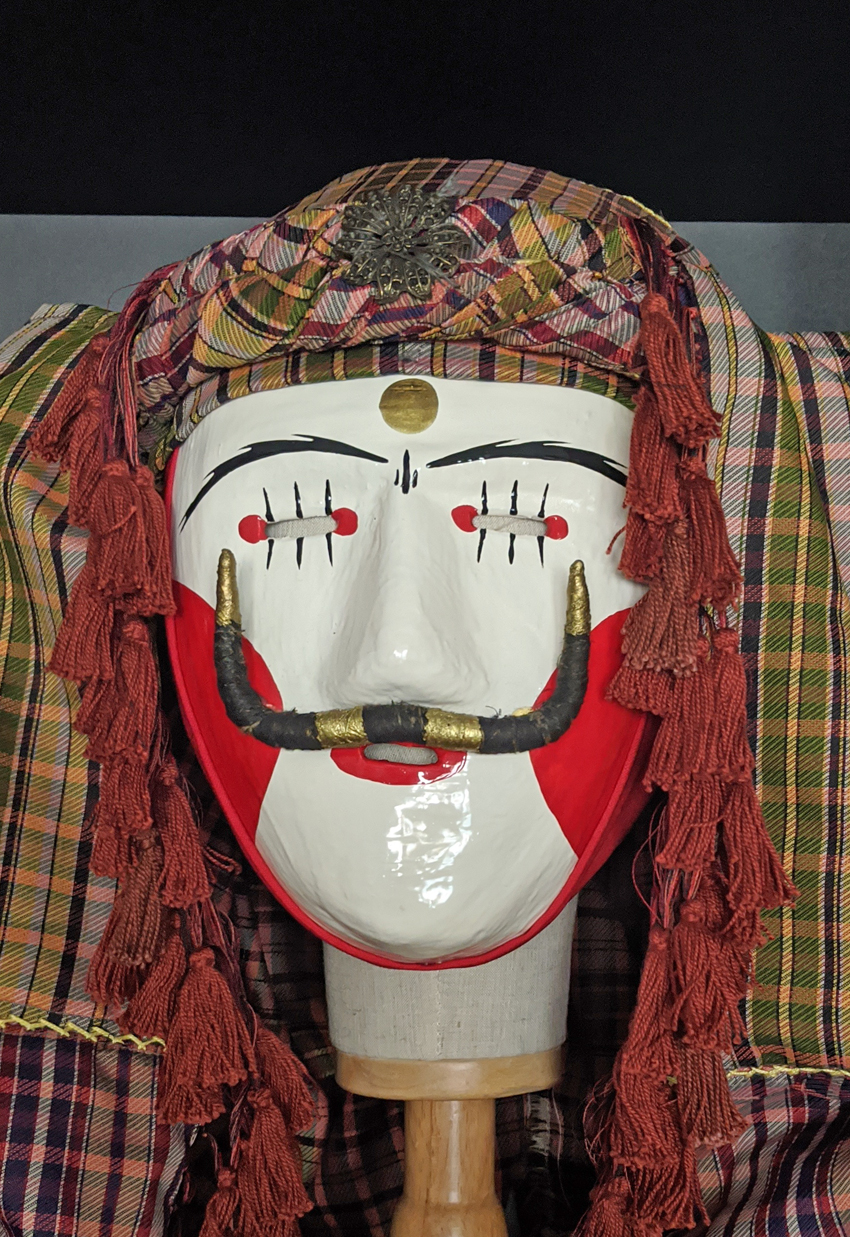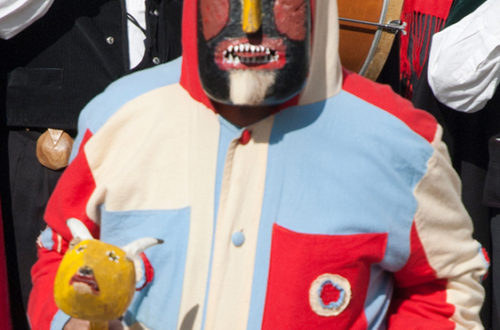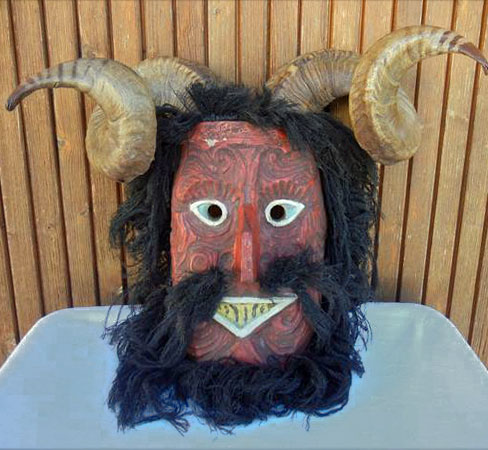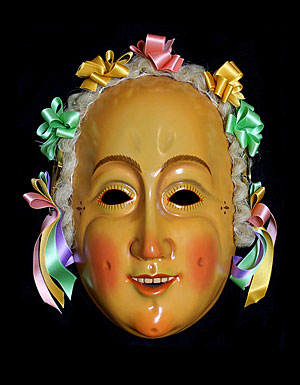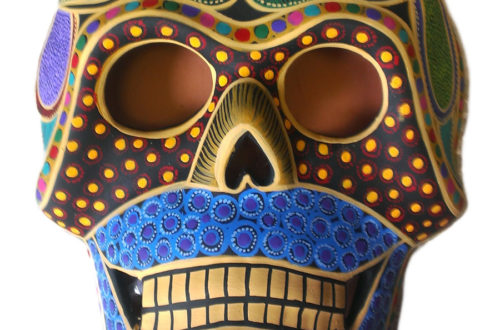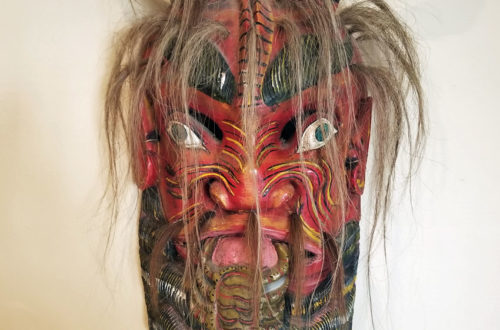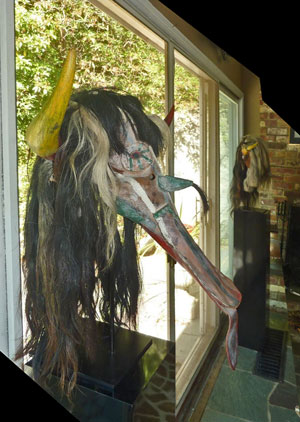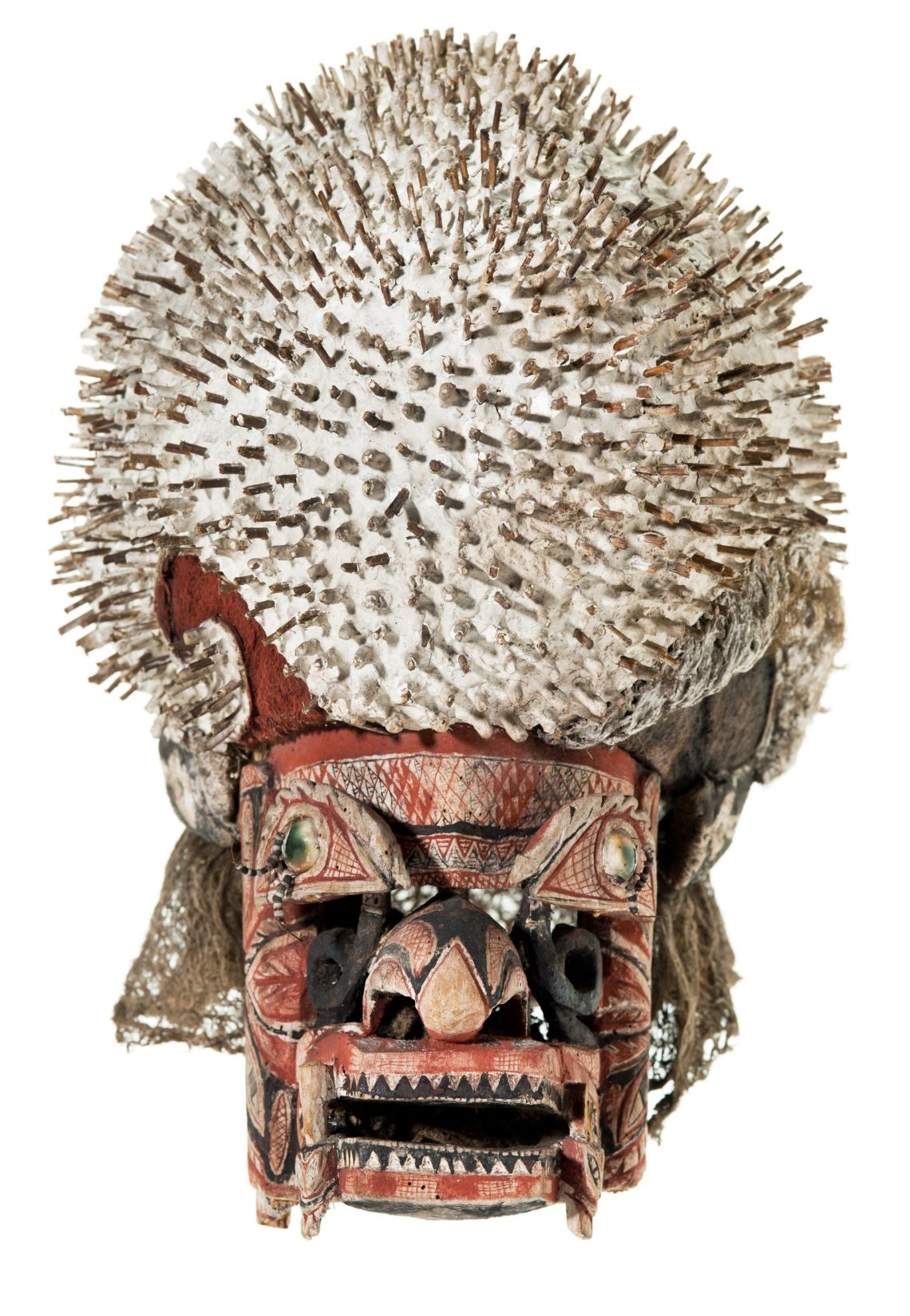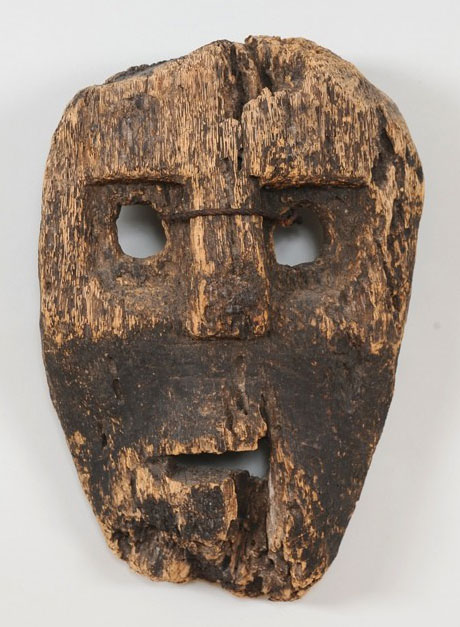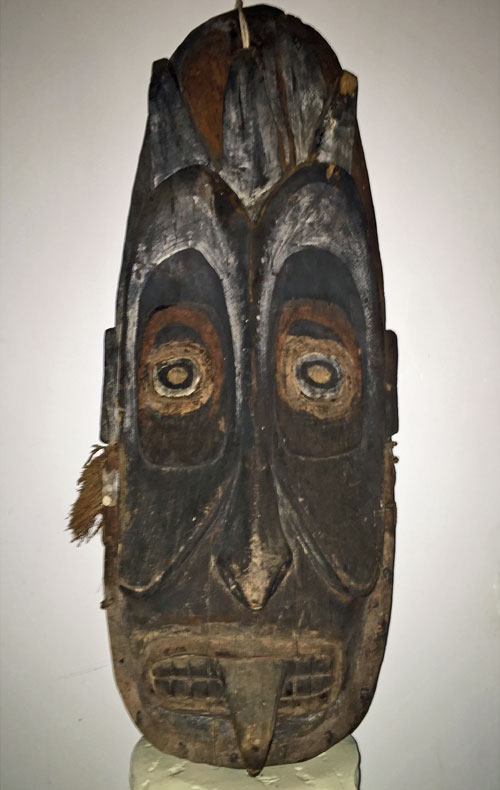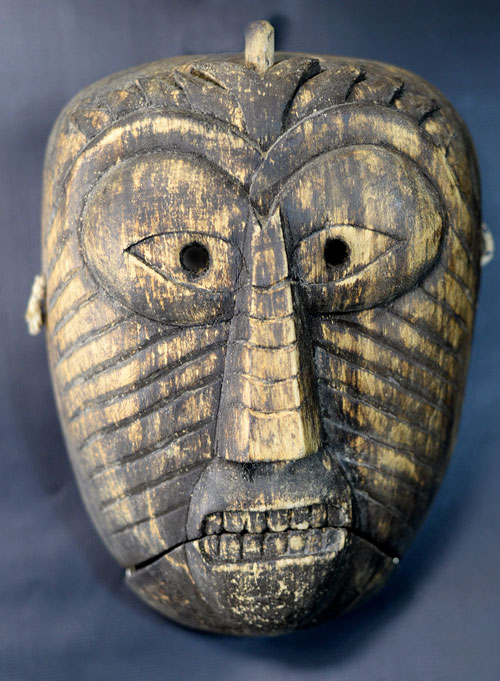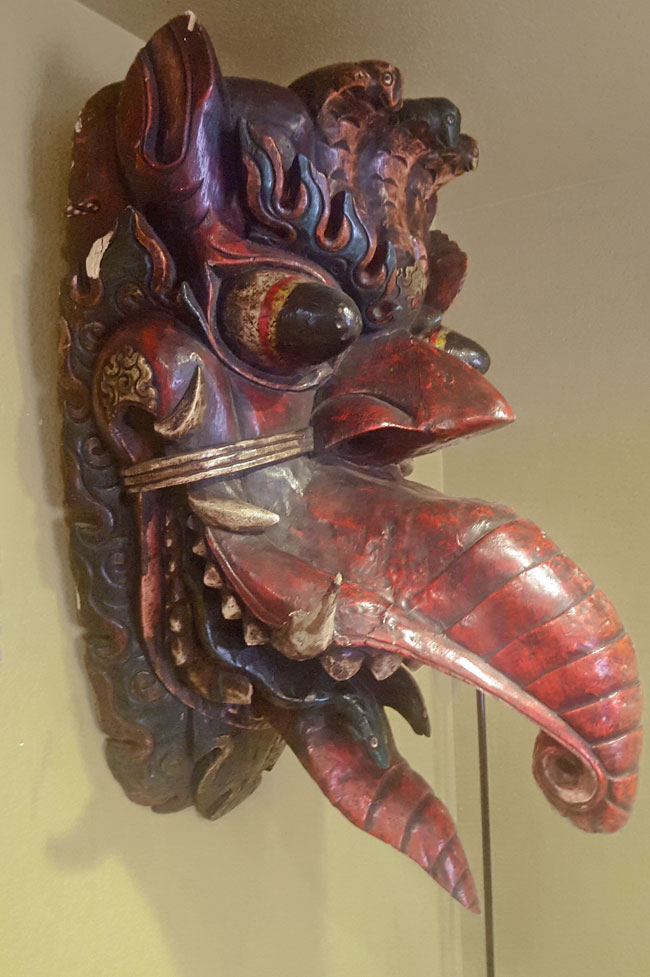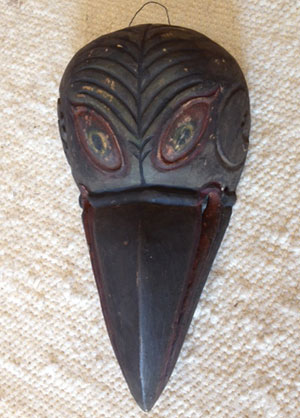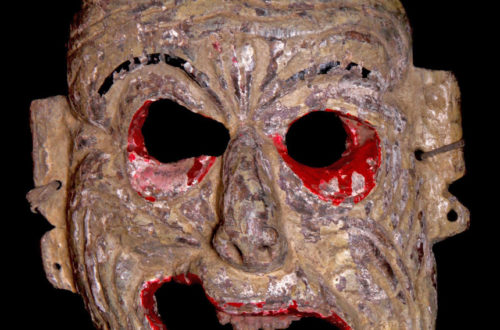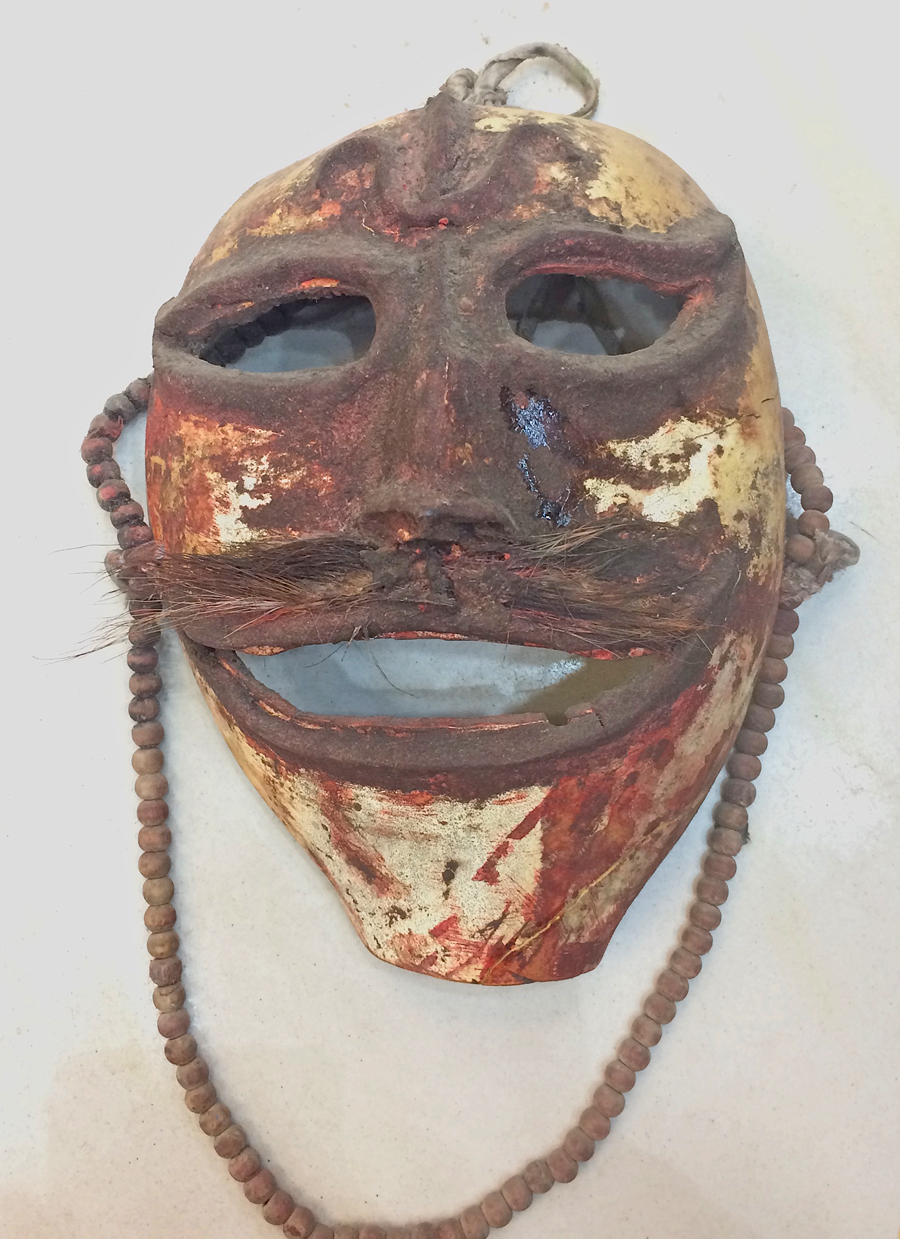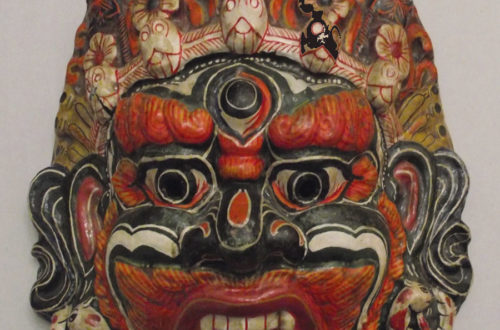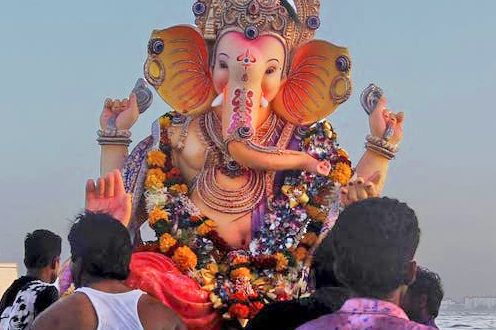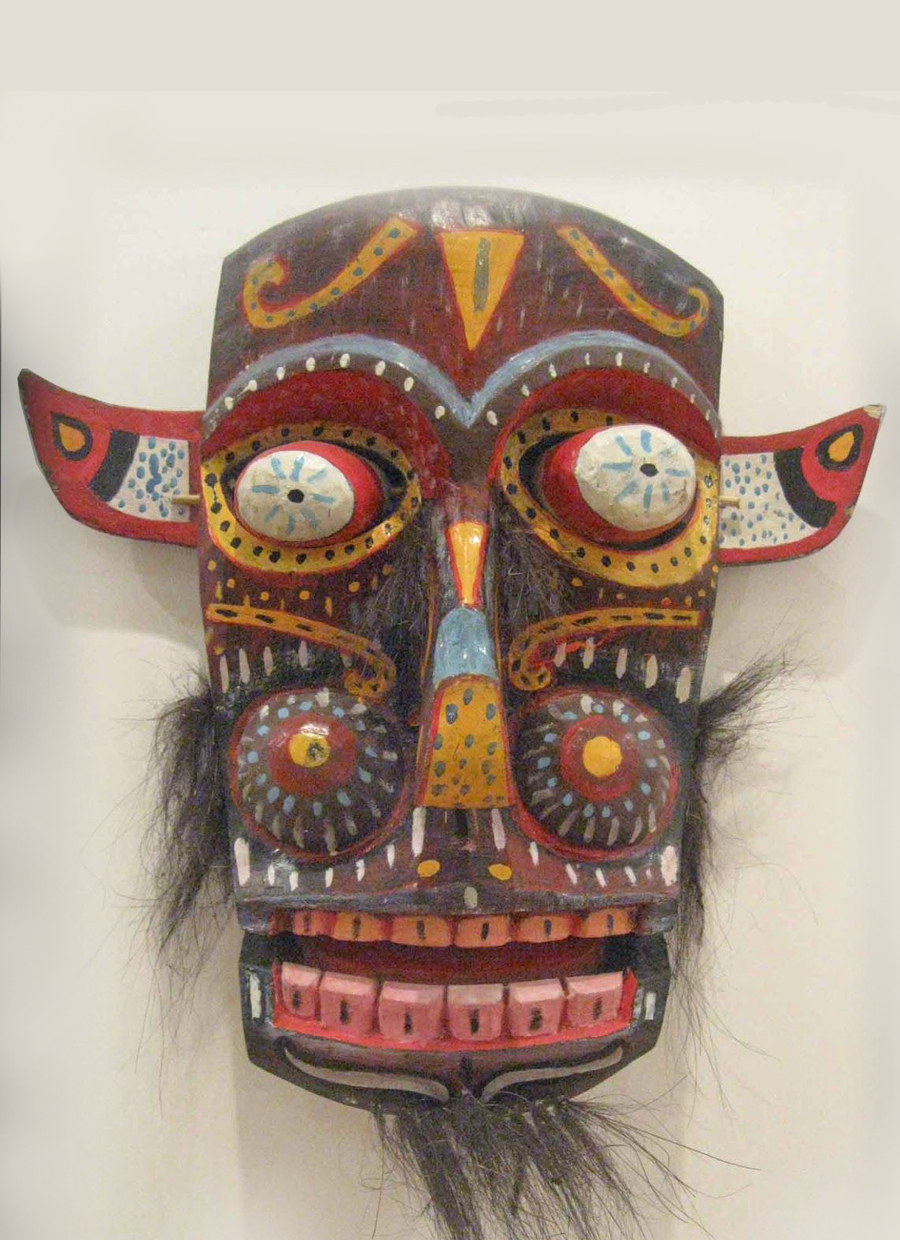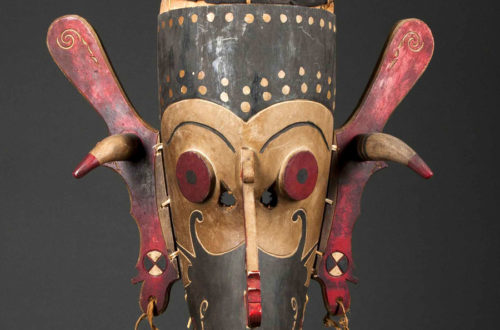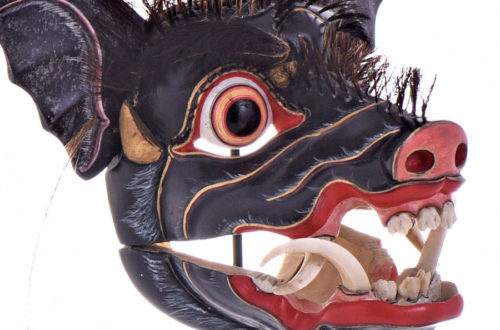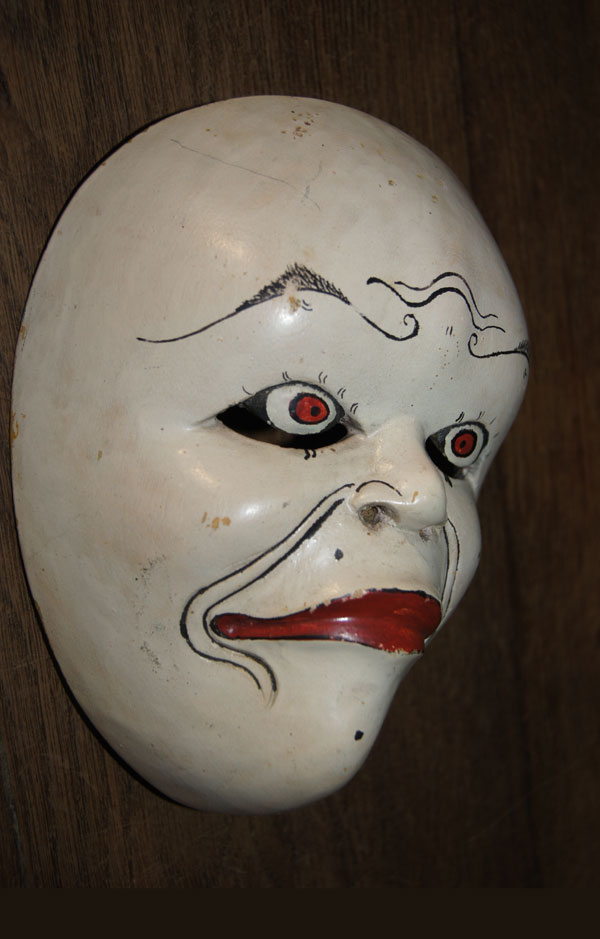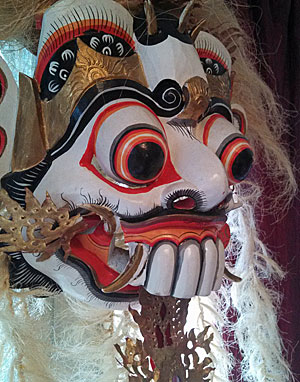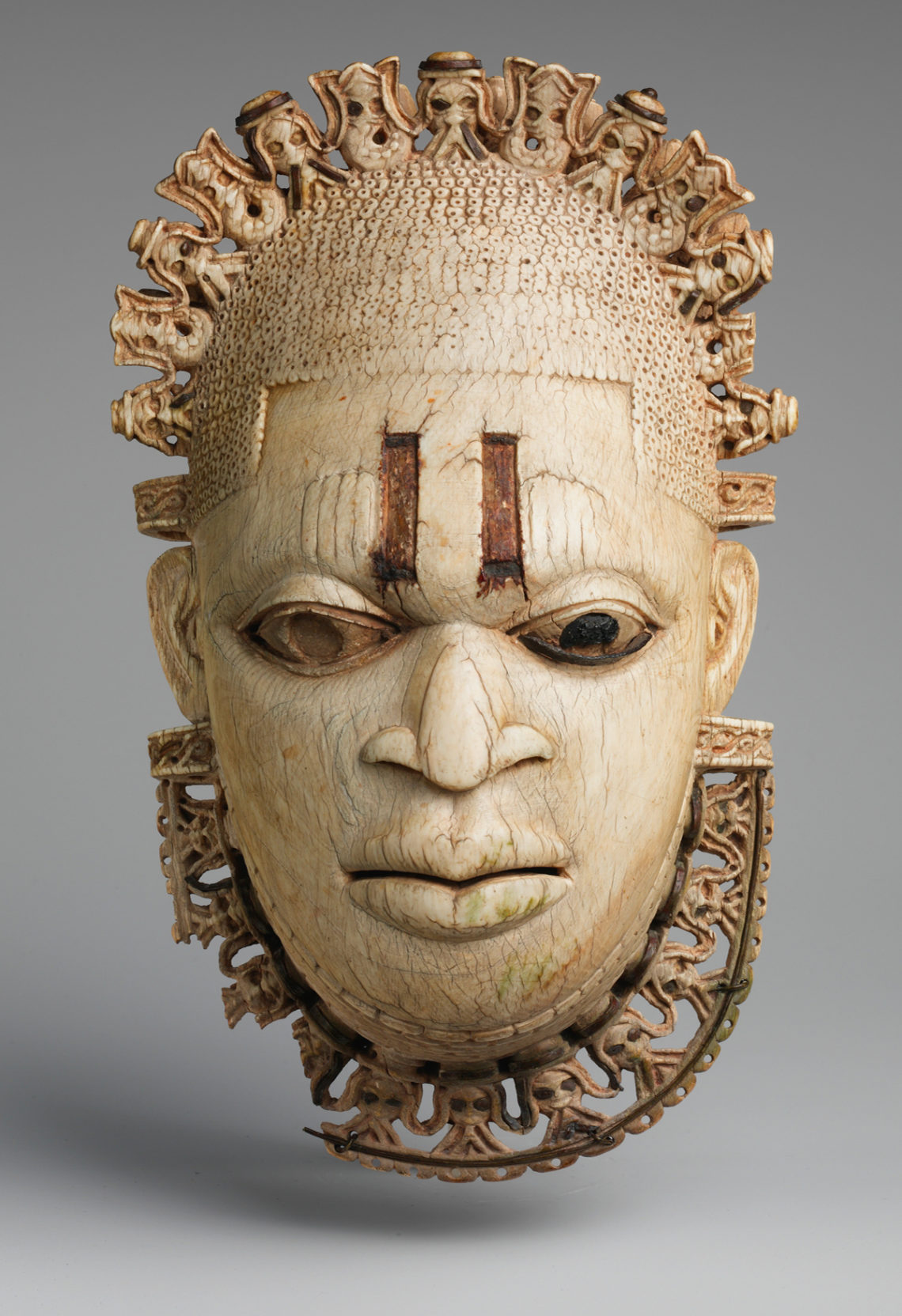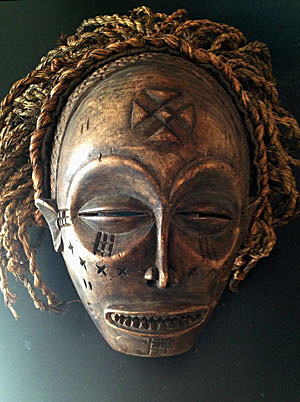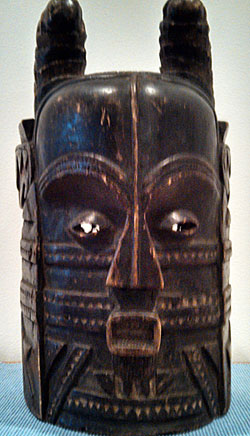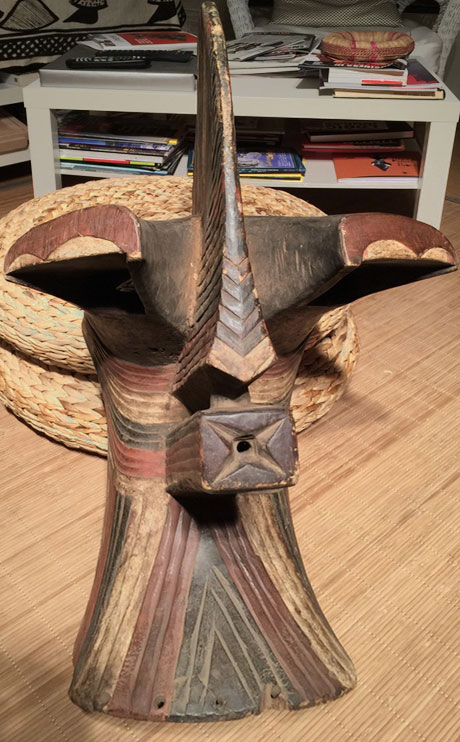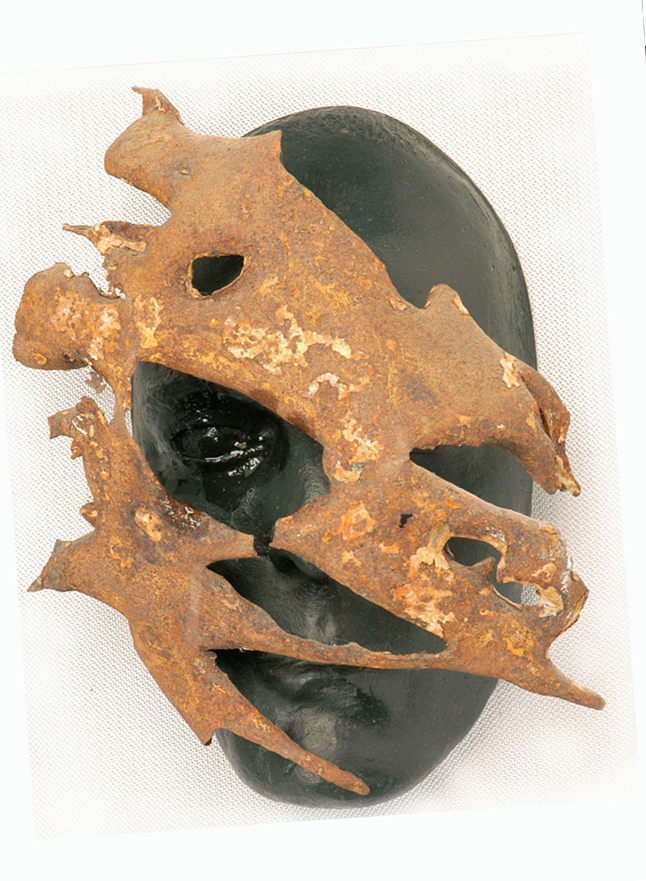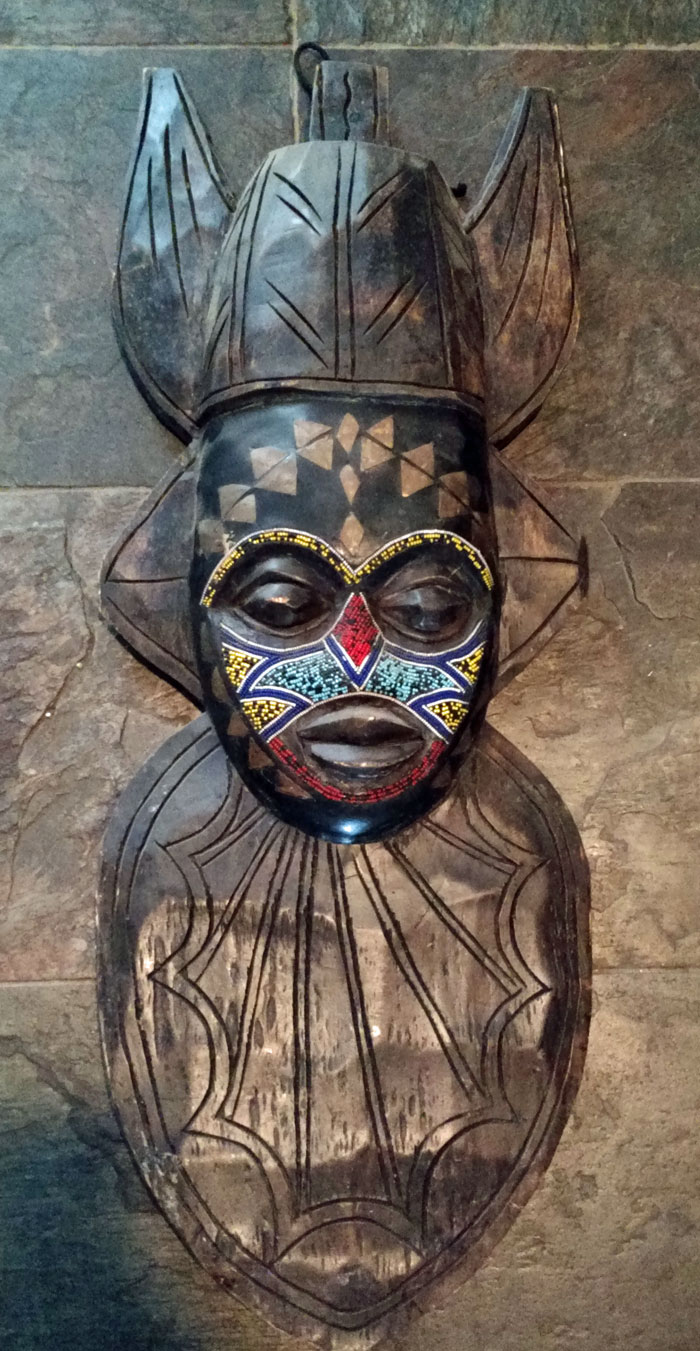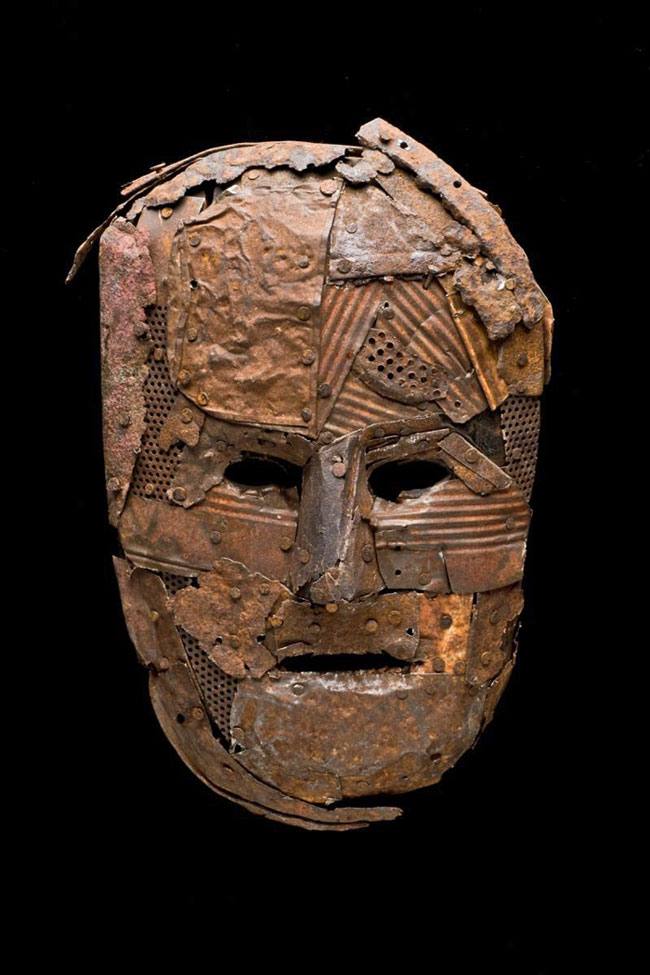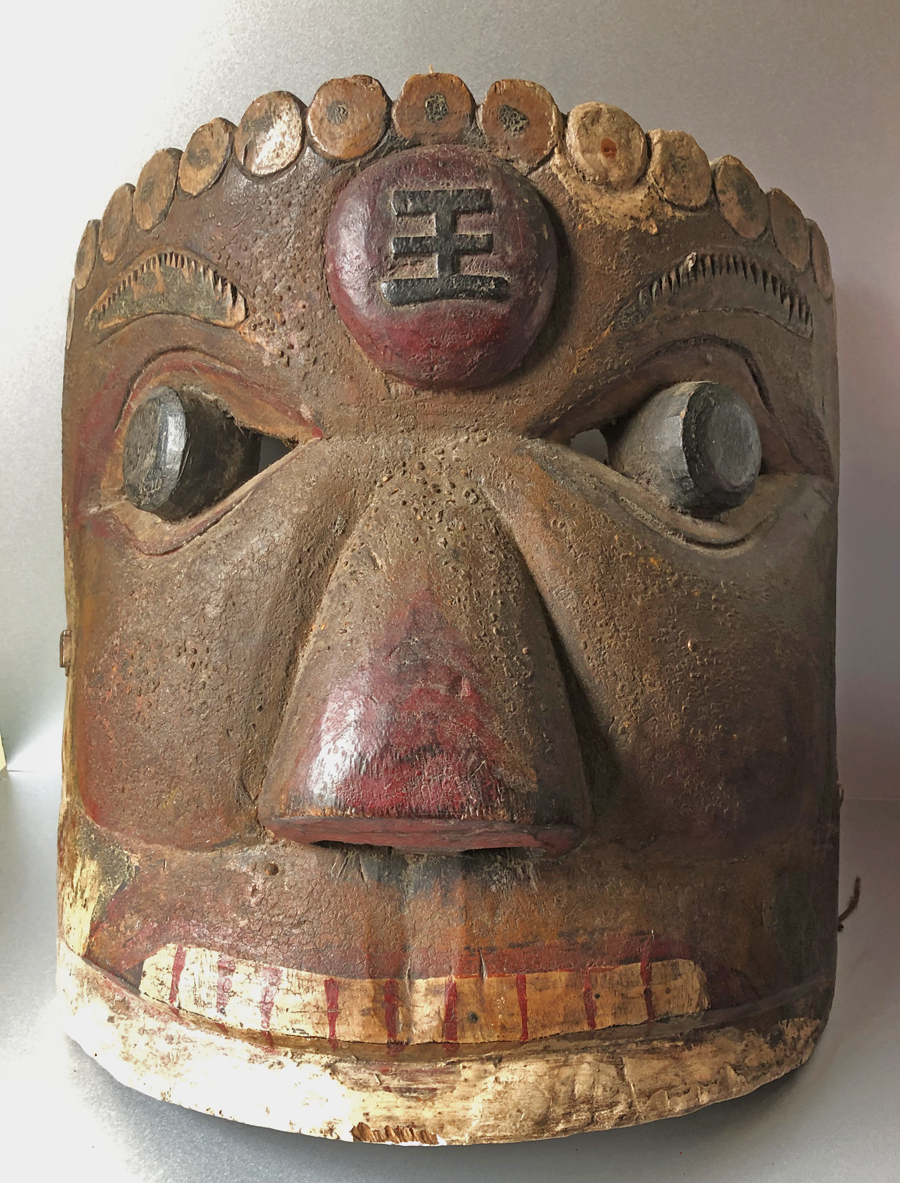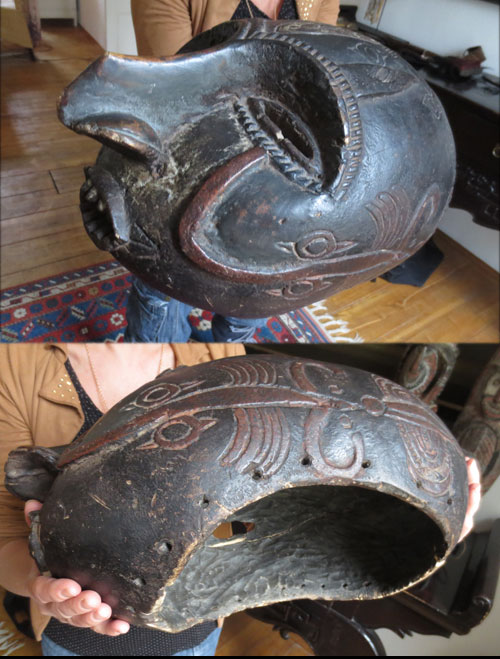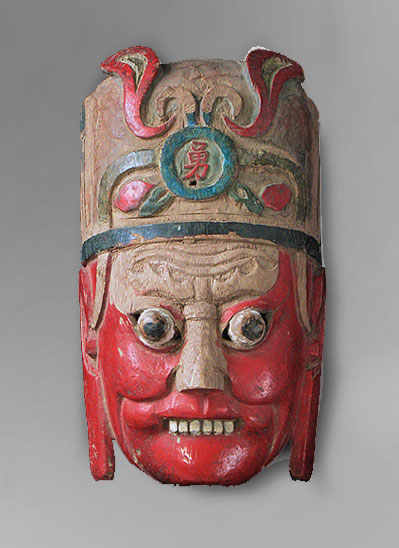Q: I haven’t seen any photos of contemporary Greek masks in the site yet, so I thought I could share one to bring some attention to their great carnival tradition. In the attached picture you can see the main masks of the Boules carnival (Bride and Janissary) from Naoussa, in Greece. I had the opportunity to spend some time with an artisan family that have been making these masks and costumes for generations, and I learned how much tradition there is in every aspect of it (masks & costumes, performances, dancing, etc.). When I got these masks then, I even got the male one custom-fitted to my head! (the in-process…
-
-
Bearded white man mask
Q: I AM VERY INTRIGUED WITH THIS MASK, ESTRUSC?, AFRICAN MASK REPRESENTED A WHITE MAN, LONG NOSE. We bought it at an art estate sale. Paintings were what we were looking for, a storage with good paintings and inside we found this mask as well. The former owner was a famous Cuban artist but not a mask collector. Maybe some present from friend or something to keep as decorative art. About price, I can’t say. Juan, 1699 A: I think it is probably from someplace in Mexico or Guatemala. Your idea that it might be an African tribal mask portraying a white man is also worth considering. Appearance of the…
-
Old Melanesian masks
The first mask is from Northern New Ireland, Papua New Guinea; the second is a Tago mask from Tami Island, PNG; and the third comes from Kamge village in the East Sepik Province of PNG. These are 3 of 17 outstanding masks that represent different cultural groups occupying the large part of the South Pacific called Melanesia. They are all from all from the Australia Museum listed below. You will surely recognize some of them in other famous museums and books. After West Africa, Melanesia has the richest assortment of highly artistic masks in the world. During the 19th century many great European artists were profoundly influenced by the folk…
-
Primitive Himalayan mask
Q: This mask was acquired from Himachal Pradesh, India, from the granddaughter of the Tibetan man who collected it. It was acquired by him more than 60 years ago, allegedly in Tibet. It is certainly a Himalayan mask, though whether it comes from Tibet or Nepal I’m unsure. It resembles some Magar shamanic masks, but it might also be a Cham mask, of a comic ancillary character that performs between dance routines. I lean towards the former. But any commentary is welcome. The mask is made of wood and very old. The hair on the scalp might be human or yak. David, 1697 A: The mask I posted for you…
-
Old mask from Himachal, India
Q: This mask was acquired in Himachal Pradesh, India. It is made of very light-weight wood, and has two cracks that have been repaired. It looks to be from somewhere in the Indian Himalayas, likely Himachal or Uttarakhand, but I’m not sure exactly where, or for what purpose the mask was made. It might be related to Faguli. David, 1696 A: Here is what Wikipedia says: The traditional dances of Himachal Pradesh are varied and complicated. These dances are a vital part of tribal life. It reflects the culture and the tradition of Himachal. Hardly any festivity there is celebrated without dancing. Dance forms such as Nati are performed all…
-
Dayak mask from Borneo
This brightly painted mask caught my attention because I have never seen anything quite like it. It was wrongly identified as Javanese, and there was no other information. I think it is from West Kalimantan of Borneo, in another part of Indonesia that is far from Java. What do you think? Bob, 1695
-
Bagong mask from Java
Q: I purchased this mask at an antique shop in Virginia. I am wondering where it is from and was it made to be worn or is it just a tourist trade item. It is about 6.5 inches wide and high, appears to be carved from coconut or some very light weight wood. I think I paid about $50 for it. Curious about the flame symbol at the eye point. Is it Buddhist of some sort? Richard, 1694 A: Your Bagong half mask is traditional and seems to have been used. Bagong masks are also made with the jaw, but they cost a little more and don’t permit drinking. The…
-
Africa’s greatest mask
This Benin ivory mask is a sculptural portrait in ivory of Idia, (Queen Mother) of the 16th century Benin Empire. Two almost identical masks are kept at the British Museum in London and at the Metropolitan Museum of Art in New York City. Both feature a serene face of the Queen Mother wearing a beaded headdress, a beaded choker at her neck, scarification highlighted by iron inlay on the forehead, and all framed by the flange of an openwork tiara and collar of symbolic beings, as well as double loops at each side for attachment of the pendant. There are also examples on the same theme at the Seattle Art…
-
Masks as art
Q: Thought you might like to see this steel mask which I made some years ago. The steel came from an area that had been subjected to a cluster bomb attack. In this case the mask doesn’t protect: rather it shows the fragility of the wearer. Steve, 1692 A: I’ve always had some interest in cultural anthropology, but I was drawn to mask collecting mainly because they combine the two most important art forms: sculpture and painting. Your piece would be called wall sculpture because it is way more than just decorative art. It is fine art, and it also has meaning. Many of the masks shown on this site…
-
Chinese Nuo Opera mask
Q: I acquired this special mask some 20 years ago. Seems to have good wear and tear to me. It’s a quite big mask (h 32cm w 33cm). I think it’s an ancient opera mask. But I’m not sure. Maybe you know more about it. Patrick, 1691 A: I only know this about your mask. Nuo opera is popular in southern China. Characterized by its special features such as ferocious appearance, unique dresses and adornments, it is also linked to exorcism. The opera is a religious performance intrinsic to the culture of Nuoism, a type of Chinese folk religion. The purpose of Nuo opera is to drive away devils, disease…
